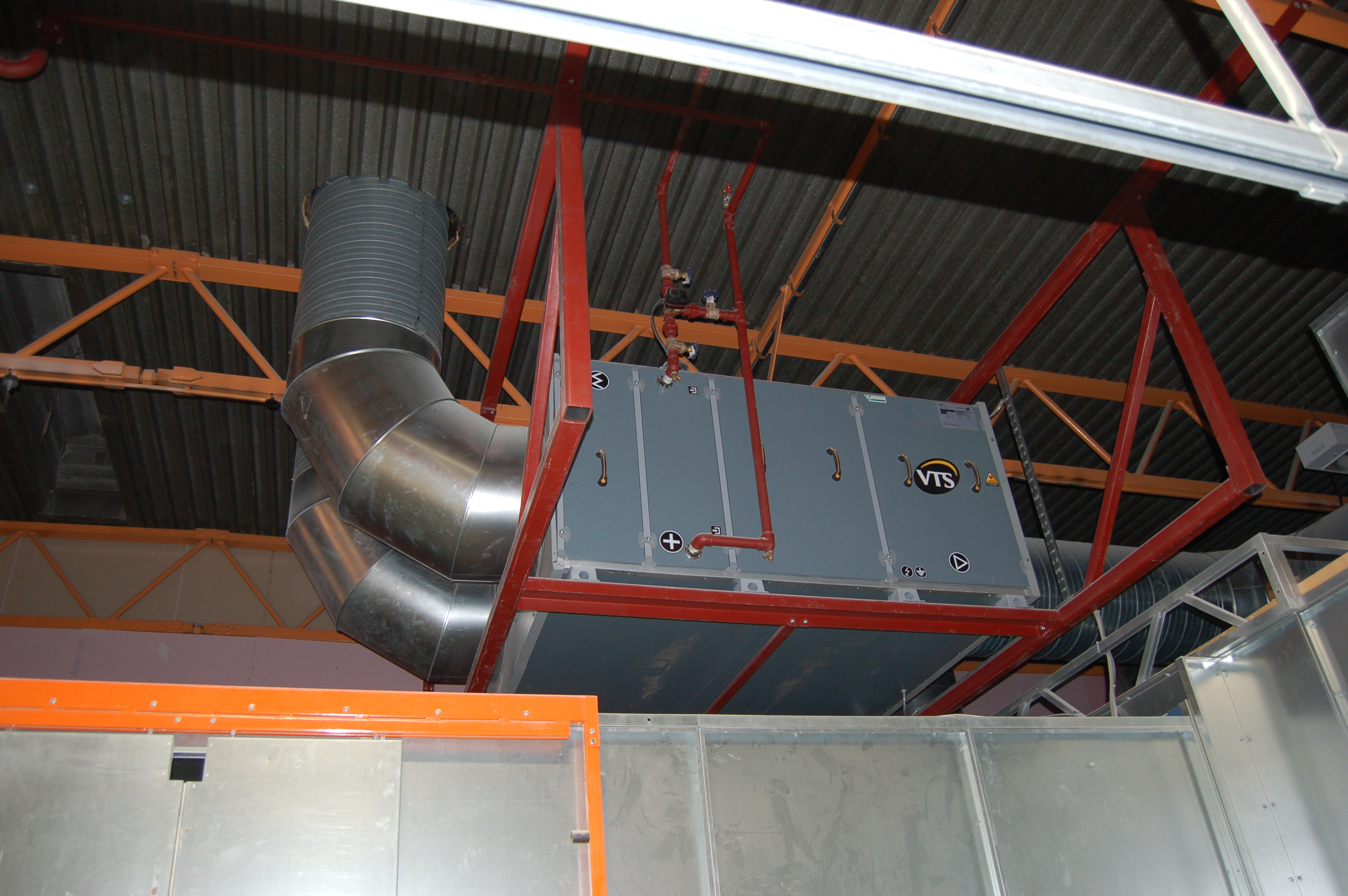By Alexander Franklin – Director, Ranheat Engineering Ltd.
For many woodworking factories, investing in a biomass boiler is about more than just burning wood waste. It’s about recovering that energy in a usable form—and nothing is more flexible than hot water.
Unlike direct warm air systems, hot water-based biomass systems can serve multiple purposes across a site. They provide silent, efficient heating to offices, power drying kilns and spray booths, and support process lines—all while using the factory’s own waste as fuel.
Let’s look at the many uses for hot water in a biomass heating system designed for woodworking.
Most wood factories have attached offices, breakrooms, or showrooms that require reliable heating. Hot water from a biomass boiler can feed standard radiators or underfloor loops, delivering stable heat across the building.
Unlike electric heaters or oil boilers, it’s a free energy source—fuelled by the wood waste you’re already producing.

While Ranheat warm air heaters are a proven solution for large open factory spaces, air handling units (AHUs) using hot water coils offer a more customisable approach—especially for factories with varied zones or specialist requirements.
When connected to a biomass boiler, an AHU can deliver a high volume of heated air into the factory, just like a warm air heater. However, AHUs also allow:
Recirculation of internal air to improve energy efficiency
Filtration and air quality control, ideal for woodworking environments
Zoned temperature control in areas with differing heating needs
For example, an AHU can draw in a mix of outside and recirculated air, heat it via a coil supplied by the biomass boiler, and distribute it through ductwork to various locations—including paint shops, drying rooms, or office mezzanines.
If you already use air handling for dust control or ventilation, adding heating via your biomass boiler turns it into a dual-purpose system—saving both energy and cost.

Proper paint application relies on temperature control. Hot water from a biomass boiler can heat the air entering a spray booth, ensuring coatings dry consistently and correctly.
Many factories install an AHU fed from a biomass boiler to supply warm, filtered air—improving finish quality while cutting drying time and rework.
Drying wood is energy-intensive, but perfectly suited to biomass heating. Hot water loops can be routed to timber kilns, pallet treatment units or post-drying chambers.
These systems reduce reliance on LPG or electric dryers and give complete control over drying profiles. In industries like fencing, packaging or joinery, kiln heating is often the single biggest energy cost—and biomass can eliminate it.
Beyond space heating, hot water from biomass can support:
Glue warmers or press lines
Veneer softening tanks
Heated washdown systems
Immersion baths or line cleaning
A biomass boiler paired with a heat exchanger can deliver process heat precisely where it’s needed—without tying up electricity or fossil fuel lines.
Using biomass to provide domestic hot water is simple. Ranheat systems can integrate with:
Staff showers
Kitchen taps
Handwashing stations
Buffer tanks for peak demand
It’s a great way to eliminate electric or gas point-of-use water heaters while still offering reliable facilities.
Many woodworking factories already have some form of hot water heating—whether gas-fired, oil, or electric. A biomass system can be retrofitted using a plate heat exchanger, allowing it to work in tandem or take over entirely.
Control systems allow zoning by area, letting you prioritise offices, kilns or process lines depending on your production needs.
Hot water from a biomass boiler can also be used to generate electricity on-site using an Organic Rankine Cycle (ORC) system. These systems recover low- to medium-temperature heat—typically from 75°C to 200°C—and convert it into electrical power using a closed-loop micro-turbine.
Ranheat works with ENOGIA, a leading ORC manufacturer, to integrate these technologies with our industrial biomass boilers. Systems like the ENO-10LT to ENO-180LT range from 10 kWe to 180 kWe output, and operate efficiently using the hot water your boiler already produces.
Turning waste heat into local electrical power
Reducing electricity bills or feeding back into the grid
Improving total system efficiency and site energy independence
Operating reliably with oil-free, low-maintenance turbines
ORC systems are especially useful on large sites where:
Heat demand varies across processes
Power generation can offset rising energy costs
Biomass fuel is already available as wood waste
Whether you’re drying timber, heating spray booths, or running kilns, the excess heat in your hot water loop can now be put to work generating low-carbon electricity. It’s another way your biomass system can go beyond heating and become a full energy recovery platform. Can I Generate Electricity from my Industrial Biomass Boiler?
A hot water biomass system gives you flexibility, redundancy, and efficiency. It decouples heat generation from heat delivery, so you can:
Burn waste continuously at peak efficiency
Serve multiple uses from one system
Add future capacity without modifying the boiler
Whether you’re heating radiators or kilns, the principles are the same. Ranheat builds industrial biomass systems to suit your layout, your fuel, and your workload.
Industrial biomass boilers do more than just save on gas. When designed with hot water delivery in mind, they provide a robust, adaptable heat source that integrates across every part of your woodworking factory.
And best of all—you’re running it on waste you used to pay to dispose of.